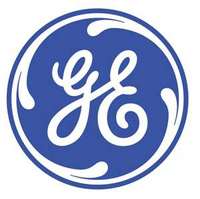NISKAYUNA, NY--April 1, 2013: In a research lab looking far, far into the future, a team of scientists and engineers from GE are developing next generation laser technologies that are rapidly becoming mainstream on the manufacturing floor. Current and future generations of the manufacturing workforce will be wielding new high-tech laser 'tools' that enable them to work faster, more efficiently and with even higher precision.
“New manufacturing employees will sort of be like Jedi Knights, wielding laser tools that cut, weld and scribe advanced metal and ceramic materials into parts.”
GE's work with lasers dates back more than 50 years. Just two years after the laser was invented in 1960, Robert Hall, a physicist in GE's Niskayuna lab, demonstrated GE's first big breakthrough in lasers, the invention of the semiconductor (diode) laser. Many of the laser applications in people's daily lives stem from Dr. Hall's invention. TV remote controls, price code scanners in stores and laser printers are all examples of laser diodes.
GE scientists have been developing laser technology ever since, with the most significant contributions happening in advanced manufacturing applications. GE has pioneered the use of lasers in manufacturing ranging from hole drilling in aircraft blades for cooling to the first use of lasers for surface treatment of blades for better strength. Recently GE laser scientists at GE Global Research in Shanghai built a unique laser deposition machine that is capable of efficiently building difficult-to-work with materials like titanium into parts as large as 1 meter tall. This additive manufacturing technique is being developed to form the leading edge of our jet engine fan blades, and we are evaluating a range of GE business applications that involve similar complex components.
Lasers are also used to assemble intricate components for a range of applications including filaments for lighting products, electrical generator components, X-ray imaging assemblies and most recently, GE's new Durathon Battery. GE researchers have also developed new techniques in laser scribing to interconnect cells in a solar module.
"As manufacturing becomes more advanced, we're beginning to see laser technologies in manufacturing move from specialty applications to common tools used by manufacturing workers on the plant floor," said Hongqiang Chen, who leads new developments for GE in laser technology. "New manufacturing employees will sort of be like Jedi Knights, wielding laser tools that cut, weld and scribe advanced metal and ceramic materials into parts."
Chen noted that the integration of laser tools and processes into manufacturing is all about going faster, being more efficient, and improving performance. The global environment for manufacturing is becoming ever more competitive. With product cycle times getting shorter and labor costs rising in developing world, the premium today is on technology to be competitive. In manufacturing, companies are looking for ways to increase the speed and efficiency of production on their plant floors. Laser devices are key tools being used to help them achieve these goals.
GE Global Research is the hub of technology development for all of GE's businesses. Our scientists and engineers redefine what's possible, drive growth for our businesses, and find answers to some of the world's toughest problems.
We innovate 24 hours a day, with sites in Niskayuna, New York; San Ramon, California; Ann Arbor, Michigan; Bangalore, India; Shanghai, China; Munich, Germany; and Rio de Janeiro, Brazil.



